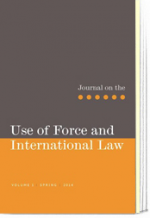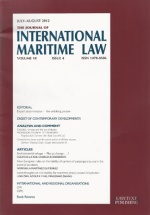Recht door zee. Hedendaags internationaal zee- en maritiem recht
Liber Amicorum Eddy Somers
Het recht van de zee, zowel op internationaal als nationaal vlak, is blijvend in evolutie. Naar aanleiding van het emeritaat van professor Eddy Somers, expert in internationaal zee- en maritiem recht, stelden An Cliquet en Frank Maes een uniek liber amicorum samen, met actuele ontwikkelingen in het internationaal zeerecht en het maritiem recht.
Een eerste deel handelt over ontwikkelingen in het internationaal zeerecht en gaat in op de toepassing van het Zeerechtverdrag op Arctica, mariene ruimtelijke planning, mariene gebiedsbescherming, mensensmokkel op zee, piraterij, hulp en bijstand.
Een tweede deel gaat in op het maritiem recht en omvat bijdragen inzake beveiliging van Belgische schepen, bewarend beslag op zeeschepen, ‘transportfacilitatie’, staking in de haven en de regionalisering van de binnenvaart.
In een derde deel komen een aantal ruimere maritieme thema’s aan bod: de historiek van de breedte van de territoriale zee, havenplanologie in Vlaanderen, scheepsafval en havenontvangstinstallaties, veiligheidsmaatregelen in de havens, samenwerking tussen Vlaanderen en Nederland inzake de Schelde en de estuaire vaart.
Het geheel is opgevat als eigentijds handboek, rijk gestoffeerd voor iedereen met interesse in de zee en het zeerecht, voor academici en mensen in de praktijk! Met bijdragen van Erik Franckx, Fanny Douvere, Frank Maes, An Cliquet, Jasmine Coppens, Klaas Willaert, Gwen Gonsaeles, Walter P. Verstrepen, Clive van Aerde, Kristiaan Bernauw, Patrick Humblet, Marc De Decker, J.W.P. Prins, Jozef Cuyt, Georges Allaert, Guido Van Meel, Dirk Vernaeve, Jacques D’Havé, Antoine Vuylsteke en Marc Vantorre.














